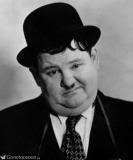I'm really struggling with shaping the galley hatch side gussets. I've pasted the specific sections in the plans where I'm having trouble. I would truly appreciate other board members' wisdom.
[i]"Cut a piece of cardboard to fit snugly on the side of the hatch opening, and trace the profile onto the cardboard, adding 3/8â€
Having a heck of a time shaping Cubby hatch gussets Help!
13 posts
• Page 1 of 1
Having a heck of a time shaping Cubby hatch gussets Help!
Larry S.
Marietta, GA
Marietta, GA
- tvlawyer
- Teardrop Builder
- Posts: 30
- Images: 14
- Joined: Wed Dec 15, 2010 8:30 am
- Location: Marietta, GA
If the compass is giving you fits, there's another method. Get a flat washer where the distance from the outer diameter and the inner diameter is 3/8. Place the washer on the edge of the plywood. Stick your pencil in the hole and hold it against the inner diameter. Carefully roll the washer along the edge of the plywood using the pencil as your "axle".
Another method is to wrap the end of the pencil with making tape until it is twice the width of the amount you want to add.
Another method is to wrap the end of the pencil with making tape until it is twice the width of the amount you want to add.
http://jkcallin.blogspot.com/
"As I wandered, alone, through the endless fields of corn, I could hear the crows. They seemed to mock me, calling out my name, over and over", said Cawe
"As I wandered, alone, through the endless fields of corn, I could hear the crows. They seemed to mock me, calling out my name, over and over", said Cawe
-

CarlLaFong - 500 Club
- Posts: 701
- Images: 5
- Joined: Wed Jul 06, 2011 9:51 pm
- Location: Sunny SoCal






 .
.